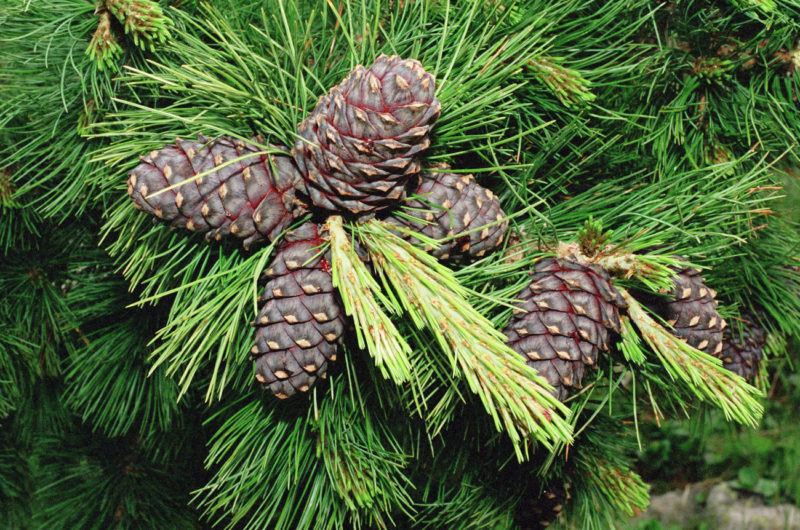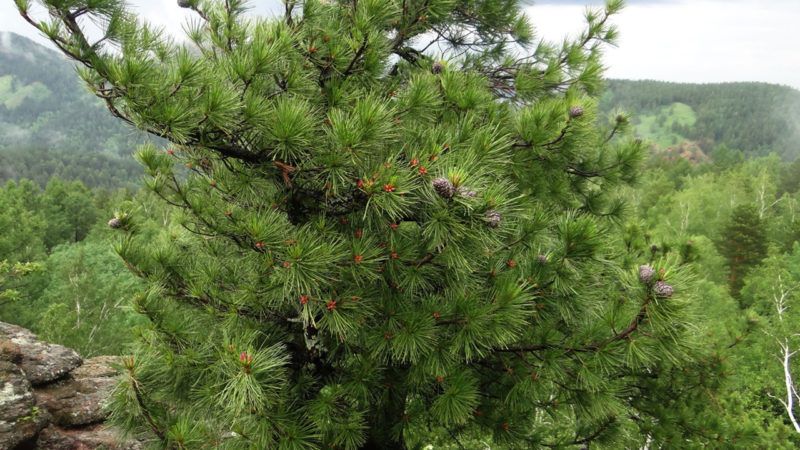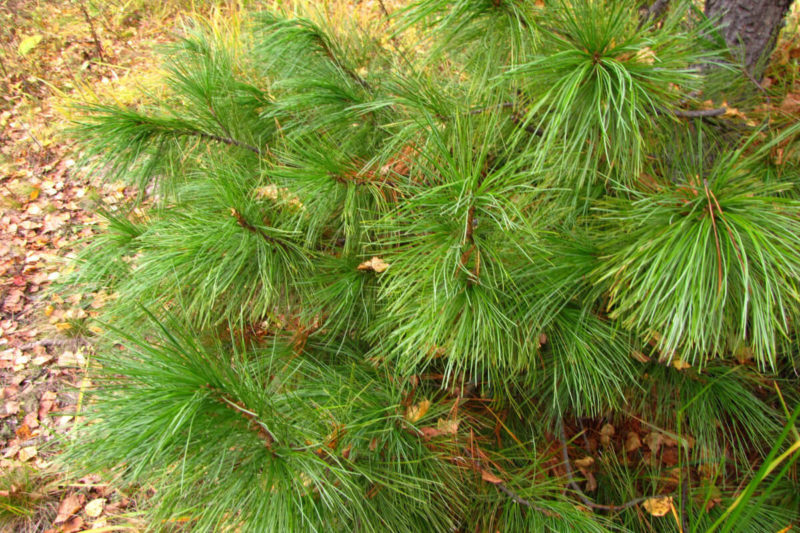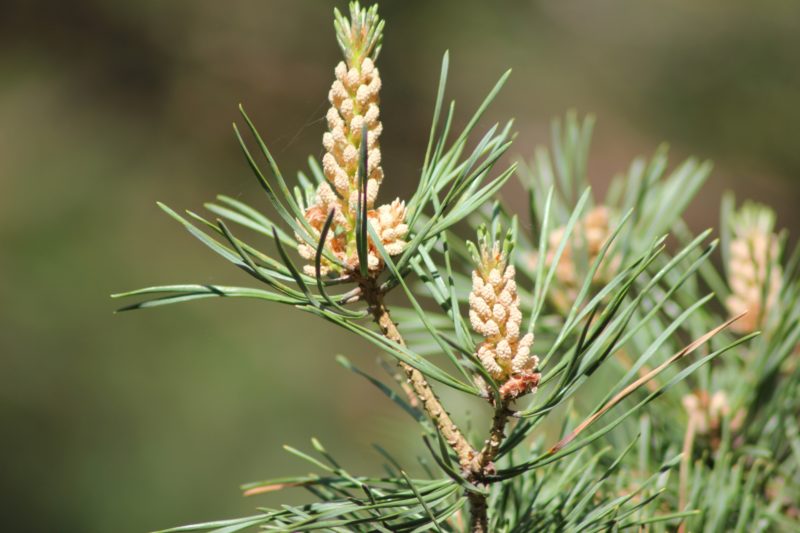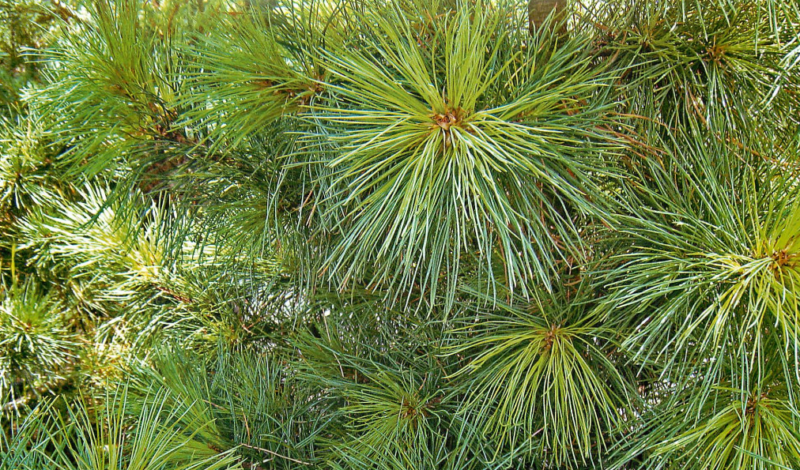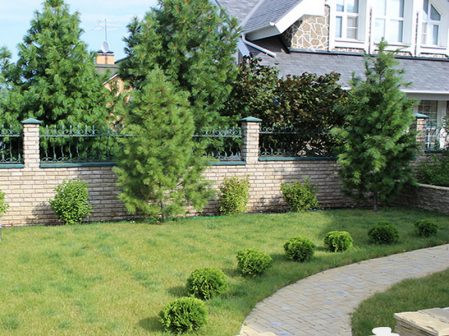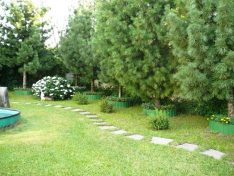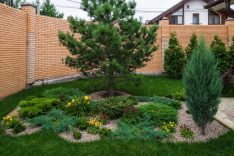Siberian pine or cedar pine is the queen among similar taiga representatives. In fairy tales, this mighty tree is represented in the image of a wise old man. Siberian cedar reaches magnificent size, therefore, against the background of other fir trees, it looks like a giant.
Material Content:
Botanical Description
This is one of the most powerful trees on the planet, in size it can only be compared with sequoia. It grows mainly in the Far East, the Urals and Siberia. In the Caucasus and Crimea you can meet another tree - Lebanese cedar.
Description of the species should begin with its size. Siberian pine reaches a height of 20–45 m. Under normal conditions, it can live up to 800 years. On powerful branches there is a long, trihedral needles, collected in corollas of 5-6 pieces.
The properties of wood make cedar a very valuable breed. Trees disinfect the air and destroy the viruses in it.
A well-developed root system consists of one main root and small secondary ones. It helps to withstand severe weather conditions. Monoecious tree. Male kidneys look like spikelets growing up. They are mainly dark red or yellow, located at the base of the shoots. And female - cones - grow on the tops of branches of 3-4 pieces. They are painted in lilac color.
Growing Features
Adult cedar does not require care if all content preferences have been taken into account. So, Siberian pine does not grow on sandy soils, it prefers land from loam or sandy loam with a high content of vitamins and minerals.
Despite the fact that it is a monoecious evergreen tree, it prefers to grow in the circle of its relatives.During pollination, they cross with each other and as a result give more yield.
If the soil is well-drained, light and airy, then the tree from the main root releases “anchors” that go 3 meters deep into the soil. Such processes help ensure the stability of the crown and trunk.
In the forests, cedar gives its first fruits 30-60 years after planting. In gardens, where it is provided with constant care and regular top dressing, it begins to bear fruit by the age of 15–20. Ceases to give pine nuts at the age of 250-300 years. Seeds ripen within a year and a half.
Outdoor landing
Before planting a cedar, you must choose the right place. Siberian pine prefers to grow in a group of several. Therefore, if the size of the plot allows, it is better to immediately plant a certain number of copies.
Siberian cedar is recommended to be engaged in these works in the spring. However, planting in early May can lead to difficulties in the initial period when the seedling takes root, as well as to problems in its further development.
In order for the trees to grow well, they must be planted at a distance of 6 m from each other and 3 m from the buildings on the site. Gardeners should remember that a young tree prefers partial shade, but an adult likes to be in the sun more.
To plant a cedar, a number of conditions must be met:
- First you need to buy a seedling in a nursery or grow it yourself from seeds. Experts do not recommend using a stalk that was dug in the forest for these purposes, since a young plant may simply not take root and die.
- The container with the handle a day before planting is abundantly moistened with water so that when it is removed from the container, it will not destroy the earthen lump with the root system.
- Siberian pine cedar is preferred to grow on loamy soil. The selected landing site is dug up. Then a pit is arranged, with a volume 1.5 times larger than the size of the container. For better drainage, a small amount of sand can be poured into the bottom.
- The stalk is taken from the container and, together with a lump of earth, is placed in the hole. Then it is half asleep with soil and watered abundantly. The remaining soil is laid out on top. The surface is compacted and a peg is driven in, to which a seedling is tied.
To preserve moisture, a hole with a young tree is mulched with straw, sawdust.
How to care for Siberian cedar pine
While the seedling is still small, it must be watered as soon as the soil under the mulch dries. Experts recommend purchasing complex fertilizer for conifers and fertilizing cedar according to the instructions. This tool will provide the tree with the necessary minerals and vitamins, as well as accelerate its growth.
After 10 years of cultivation, Siberian pine no longer requires human care. The only thing that needs to be done is to fertilize it with special mineral fertilizers once every 3 years. In a dry summer, cedar pine will be happy to spray the crown.
Gardeners need to remember that the formation should begin from the first years of the tree’s life on the site. The cedar crown can be made spreading, with many peaks or lowered.
Breeding methods
Cedar tree propagates in two ways: by grafting on an ordinary pine shoot and seeds.
To get seedlings from seeds, the following activities are to be carried out:
- Buy fresh pine cone with pine nuts.
- From it you need to choose the seeds. If the scales are tightly compressed and do not open, then it is recommended to pour them with boiling water first.
- The resulting planting material must be stratified. There are two ways to do this.
- In the first case, the nuts are soaked for 3 days in hot water. Periodically, the fluid must be changed. Those seeds that come up can be thrown away. The remaining planting material is treated with potassium permanganate and fungicide. Seeds are placed in a fabric bag with sand, peat and sawdust.Then for 3 months they are placed in a wooden box and placed in a refrigerator or cellar. Check the humidity of the packaging regularly.
- In the second case, the seeds are washed and placed in a freezer for three days.
- After they have passed the stratification stage, the material is planted in containers with a suitable mixture to a depth of 2-3 cm.
- From above, the soil is well compacted so that the sprouts can get rid of a hard peel.
- Then put the container in a bright place and constantly moisturize.
To obtain good seedlings, it is better to use a long-term method of stratification, since the conditions proposed by this method are most close to natural ones and allow seeds to grow more healthy.
Common Diseases and Pests
Many gardeners dream of growing this magnificent evergreen tree. Such popularity arose not only because of its beautiful appearance, but also due to the appearance of tasty and healthy pine nuts. However, the crop can never wait if you miss the beginning of the development of any ailments.
The most common diseases include:
| Problem name | Ways to fight |
|---|---|
| Pine aphid | In the autumn, adults on the inner side of the needles lay larvae. They awaken in the spring and begin to destroy the plant. Therefore, the gardener during this period can treat the tree with insecticides. |
| Pine shield | Infection with insects leads to decay of the needles and the death of the cedar. For disposal, multiple spraying with insecticides is used. |
| Pine scoop | Caterpillars that appear in May. Larvae feed on young buds and needles. To combat them use the drug "Lepidocide", which is sprayed with cedar in early spring. |
| Hermes pine | These insects are very similar to aphids. For adult trees, parasites are not dangerous, but young ones can die because of them. To get rid of pests, cedar must be treated with insecticides several times per season. |
A disease such as tar cancer is very dangerous for cedar pine. When this disease is affected, gray-yellow growths appear on the cortex - “swelling”, in which spores of fungi are located, leading to the death of the bark and wood. Resin flows from damage, which attracts a large number of insects. First, the tree weakens, then completely dies. Treatment with drugs most often does not bring results, so the only solution is to destroy the affected mass.
Use in landscape design
Siberian cedar is not recommended to be planted next to currant and gooseberry bushes, since these plants are carriers of rust fungus. And if you sow lupins near a tree, then their stems after dying will serve as an excellent fertilizer for the Siberian pine.
Cedar prefers to grow next to deciduous trees such as birch, maple, aspen, linden.
And also the Siberian pine looks great together with alpine slides, or rosaries. Flowers are usually planted on the north side of the tree, which will protect them from the cold wind and bright sun.
Siberian cedar will not only decorate any site, but also after a while will give a healthy and tasty crop. The seeds of Siberian pine can have a healing effect on the body, improve blood composition and strengthen immunity. The resin of the tree is used to treat skin diseases, and also easily heals burns, wounds, cuts. Furniture is made from Siberian pine wood, musical instruments, and other environmentally friendly household items.


